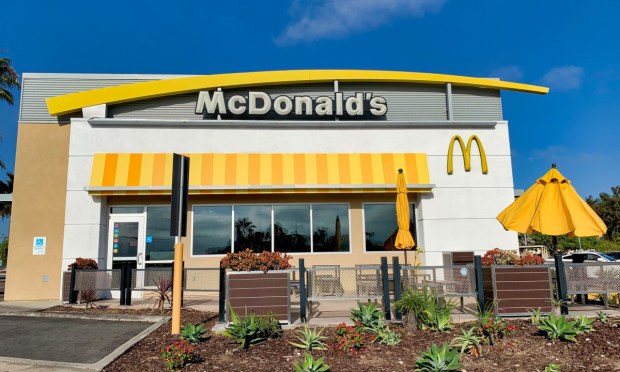
McDonald’s is taking advantage of the sheer scale of its loyalty following to make it more difficult for competitors to hold their own in the digital space.
The quick-service restaurant (QSR) giant, which has more than 40,000 locations around the world, shared on a call with analysts Monday (Oct. 30) discussing its third-quarter earnings results that, in its six top markets, its loyalty membership base amounts to 57 million.
“This business is starting to amass, on the digital side, some pretty significant scale, … [which] opens up a lot of opportunities that we think, quite honestly, are going to be difficult for our competitors to match,” McDonald’s CEO and President Chris Kempczinski said on the call. … “When you take our physical presence, having more restaurants in the U.S. than anyone else, [and] our digital presence, which is bigger than anybody else in the U.S., we’re in a really strong position in the U.S. to continue the growth that we’ve got.”
Most consumers engage with restaurants’ loyalty offerings. PYMNTS Intelligence’s March study, “Connected Dining: Consumers Like the Taste of Discount Meals,” which was based on a February survey of more than 1,800 U.S. consumers, found that 51% reported using a restaurant loyalty program and that adoption of QSR programs had grown 15% year over year.
Still, despite this competitive strength, the restaurant giant is feeling the challenges that many in the space are experiencing amid inflation and other macroeconomic headwinds, with Kempczinski noting a “slight dip in traffic.”
A PYMNTS Intelligence survey of more than 2,300 U.S. restaurant customers late last year revealed that roughly a third of consumers have been making purchases from restaurants less frequently amid inflation.
Restaurant inflation is especially high right now. According to the latest Consumer Price Index (CPI) data from the U.S. Bureau of Labor Statistics (BLS), restaurant prices are up 6% year over year — and that figure is 62% higher than the all-item inflation rate.
Yet loyalty programs can help combat pullback, incentivizing consumers to make purchases at times when, without such offers and messaging, they would not, McDonald’s Chief Financial Officer Ian Borden contended on the call.
“We’re learning when [customers] visit, how they visit and what they buy, with more and more of our sales coming through identified channels than ever before,” Borden said. “By continuing to elevate the McDonald’s digital experience, our customers feel more connected to the brand, driving those incremental visits that we believe would otherwise go uncaptured, and it gives us more ways to reunite with customers who haven’t visited us in a while.”
Digital is becoming increasingly key in the restaurant industry, with a plurality of diners engaging with brands both via physical and digital channels. The PYMNTS Intelligence report “Consumer Interest in an Everyday App,” created in collaboration with PayPal, drew from a survey of more than 2,200 U.S. consumers. It found that 24% of those who purchased food from a restaurant in the previous 30 days did so exclusively using internet-connected devices, while 36% did so both via connected devices and by more traditional means (in person or by calling).